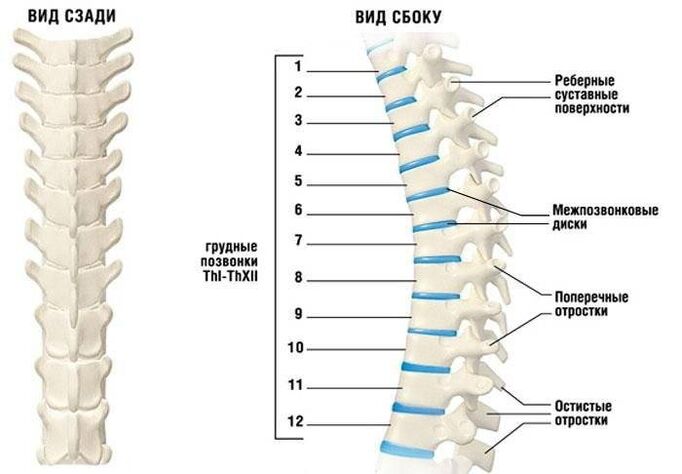Currently, according to medical statistics, almost all people aged 25-30 complain about the symptoms of cervical osteocondrosis.The disease has this spinal effect more often.The pathological is a progressive degenerative process that affects intervertebral disks and spines located in its neck.The disease is also widespread among men and women.This is a dangerous and complex form of osteocondrosis, because the brain and large blood vessels are located on the neck of large numbers.Innervation and violation of blood flow cause the brain to deteriorate oxygen and nutrients.

Signs of the disease
The symptoms of the osteocondrosis of cervical spine are used in other parts of the spine, and small damage.This is because the spines in the neck are close to each other and are a small height of intervertebral disks.Such an anatomical feature, osteocondrosis, nerves, the spinal cord, helps to be more often compressed with blood vessels.
General Symptoms:
- pain syndrome;
- weakness and decrease in sensitivity in upper extremities;
- Restriction of neck mobility;
- violation of coordinated actions;
- often dizziness;
- General weakness;
- Deterioration of actress bodies (hearing, vision, touch, taste).
The pain is more localized in the neck, the back of the head is given behind, shoulders, arms.The annoying waists of the upper limbs damage the damaged vertebrae, which is responsible for innervations.The pain behind the head is the spastic contraction of neck muscles added to the occipital bones and related to the violation of the blood circulation in this area.
If the nervous waist is involved in a pathological process that provides the innervation of the muscle structure of the muscle structure, patients are observed.If bone growth in cervical vertebraes, the formation of a crisis or a crisis, the restoration of a crisis and the height of intervertebral disks, which is reduced in combinations between the spines.
There are the transverse processes that form a channel in which the orphans in the neck are located in the brain.The spine with osteocondrosis of cervical spine is displaced in them, and the connecting tissue is growing.This causes the cervical artery to deteriorate blood supplies behind the brain and behind the brain.As a result, a person is often disturbing the overall weakness, coordinating dizziness, movements.In detail, if the artery mixes or strongly disappears, the oxipital part and the brain body are significantly deteriorating if it is confused in the pathological process.In this situation, the functionality of hearing and vision bodies decreases language and numbings of fingers.
The symptoms of the disease were affected by a dystrophic or inflammatory process from eight vertebrae.Sensitivity and motion diseases cause damage to sterebrospinal roots affecting certain vertebres.Depending on this, the following manifestations of cervical osteocondrosis are observed:

- The first vertebra - the neck and the oxipital part is numb, the sensitivity decreases;
- The second - the crown and the pain in the nap is felt;
- The third pain is felt and the intensity of the tasting senses is reduced and speech violations are located in this part of the neck.
- Fourth - pain in pain should be worried about the tone of the muscle of the skapula, patient heartache, breath disorder and neck;
- Fifth - Pain is observed in the neck of the shoulder;
- Sixth - The pain in the neck is lined up on the shoulder blade felt in the forearm and thumbs;
- The seventh - pain is given to the shoulder blade, shoulder, the back of the front sleeve (fourth from the second);
- Eighth pain - spread from neck to shoulders, front and small fingers.
Depending on the spread of the lesion, the cervical spine differs from osteocondrosis.Not the stage of this disease, but the severity of the symptoms due to how much the pathological process was spreading, due to what spines affect.
- In the first extent, there are no clinical symptoms or minimal self.Patients strongly complain of pain, strengthening during the actions of the head.The treatment starting at this stage of the disease will be effective.But people often ignore the concerned symptoms or do not feel them, so they do not apply to the doctor.
- The complication of the pathological process increases symptoms.In the second stage, the pain becomes more pronounced, gives the upper limbs and shoulder blades.At this stage, the height of the intervertebral disk in the development of the degenerative process decreases, resulting in nerve fifi.This is the cause of increased pain.The second rate of the cervical region is characterized by the worsening of headaches, decreasing work capacity, decreasing, headache.
- The third rate of cervical osteocondrosis is distinguished by the emergence of an affected intervertebral disk.The neck of the neck is limited, the patient feels severe pain.With this spread of the pathological process, the pain becomes permanent, radiating to the upper limbs.The tension of muscles attached to the okpital bones is felt.Patients are often complaining of dizziness, general weakness and numbness.
- The intervertebral disk is diagnosed with a fourth rate of cervical osteocondrosis when a dopropic process is completely destroyed by a process.This is replaced by fibrous tissue, which causes an important restriction of mobility.The spinal cord and blood vessels are affected by flying in the neck.Such changes are characterized by a significant deterioration of the brain to the oxipital blood supply.Oxygen hunger causes the coordination of actions, hearing barriers, vision, language, speech disorders.
Treatment methods
When the first exciting symptoms appear, the unpleasant feelings in his neck will prevent the advancement of the response from the nervous system.Cervical osteocondrosis treatment consists of a therapeutic action complex.Among them:
- to take medicine;
- massage;
- Physiotherapy physical education;
- Physiotherapy procedures.
Drug therapy
Doctors set antiinfflicatory drugs to reduce the intensity of pain, reduce inflammatory process and reduce the swelling of the nervous spine.Chondroprotants restore damaged cartilage tissue in the intervertebral disk.Pussors relieve the muscles of the neck, relieve spasms.Medications to improve blood flow helps to restore impaired blood supply to the brain.Vitamins B activates metabolism in nervous tissues.Doctor with intense pain can set analgesic medications.If the patient has a pronounced pain syndrome, analgesics are included in paralleme, switch to tablets after pain.
Physiotherapy methods
Physiotherapy is an effective way to combat the osteocondrosis of the cervical region.It is important to treat such techniques using such techniques, the following results are obtained.
- The intensity of pain decreases;
- Restoration of affected bone, cartilage and muscle tissues is active;
- Spasm and tension are removed in the muscles;
- An inflammatory process is suspended;
- Delivery of oxygen and nutrients in the affected area and the brain improves.
The most effective in the treatment of osteocondrosis is the following types of procedures:
- Drug electrophorehesia (affected region, along with the restoration of blood flow and tissues, moving with an electric shock that improves the delivery of the drug to the tissues affected by the degenerative process);
- Ultrasonic therapy (metabolic processes in the patient area are activated, reduces pain, inflammation is suspended);
- Magnetotherapy (eliminates swelling from the affected area that helps reduce the intensity of pain);
- Laser therapy (in the pathological process improves the circulation of blood and has anti-inflammatory effect).
Medical physics education
Exercises are assigned during the period when the disease has been suspended.No worries and pain should be felt during gymnastics.The complex must be carried out after reaching a continuous remission to prevent relapse.

- Take a position stretched in the stomach, lift your head and body, based on your hand.The back is true, breathe deep and even.Take a slow start position, lying in a position for one or two minutes.The repetition number is 3.
- The apartment stretches along the stomach, body.Turn your head slowly by trying to touch your ear.Repeat 6 times on all sides.
- Sitting or standing, bend your head to an inhalation, trying to reach your chest on your chin.Get back on a smooth way, raising your eyes to the ceiling in Exhale.The repetition number is 10-15.
- A good exercise to strengthen cervical muscles is to push the forehead by taking away the hands of his hand.To achieve the effect, you need to push the palms on the forehead and forehead in the palm of your arm.Repeat three times.
- Rotate your head in a circle.Do exercise slowly, smoothly.In each direction - 10 revolutions each.Dizziness occurrence during actions is unacceptable.If this happens you should stop immediately.
Massage
The course is appointed by a doctor in a period of lack of a sharp pain, only a medical education specialist can do it.It is not recommended to contact such a disease with non-profit.
Therapeutic effects of the media of the nearest area:
- In the affected area, blood flow and lymph improves;
- The muscles are relaxed, spasm is removed;
- The intensity of pain is reduced.
Surgical intervention
If the operation does not bring the result in six months, the patient suffers from severe pain, damage to nervous fibers and myelopathy.If osteochondrosis of the cervical region continues with complications, there is a danger of stroke, there is a strong compression of the spinal cord, then the operation is needed.
According to the instructions, they apply to the types of the following surgical interventions:
- Endoscopic discoctomy - withdrawal of a part or intact intervertebral disk;
- Laminotomy - the extension of bone connectors and bone tissue wear particles (often combined with laminoplasts, creating artificial tiles to expand the spinal canal);
- Laser evaporation of the disk core - violation of the nucleus of intervert to intervert with a laser beam at the same time as the destruction of destroyed fragments;
- Cold -Plasma Nucleus - instead of an endoscope, a long and delicate husband sharp needed into the intervertebral disk, an electrode, which is a cold-blooded effect, is delivered to the destruction area.
Big blood vessels of the neck, the passage of the spinal cord is a complex organ.It is easy to suffer, so they apply for operation no more than 5% of the work.Surgical treatment is often accompanied by the development of complications.Among them:
- inflammatory process in the tissues or membranes of the spinal cord;
- osteomyelitis;
- The formation of wounds causing arterial and spinal channels.
Cervical spinal transactions are complicated and requires a long rehabilitation period.After the operation, the patient's recovery takes a while for six months or more.
Prevention
To prevent the development of cervical osteochondrosis, the following are needed:
- to control the position of spine and neck;
- Take an active lifestyle, move more;
- While physical exercises, it is necessary to observe the accuracy of execution, even minor injuries may influence the state of the musaloshelet system;
- Note the correct position of the body during sleep, take a orthopedic or an anatomical mattress;
- Try a workplace where a person spent a lot of time;
- regularly engage in body culture;
- Follow the diet, ensure the acquisition of all useful minerals needed for bone fortress, especially magnesium and calcium;
- Dispensary examinations are constantly on time to detect osteocondrosis.
Prevention will help prevent degenerative changes in cervical spine, protects against pain, dizziness, limbs and other unpleasant symptoms.

















































